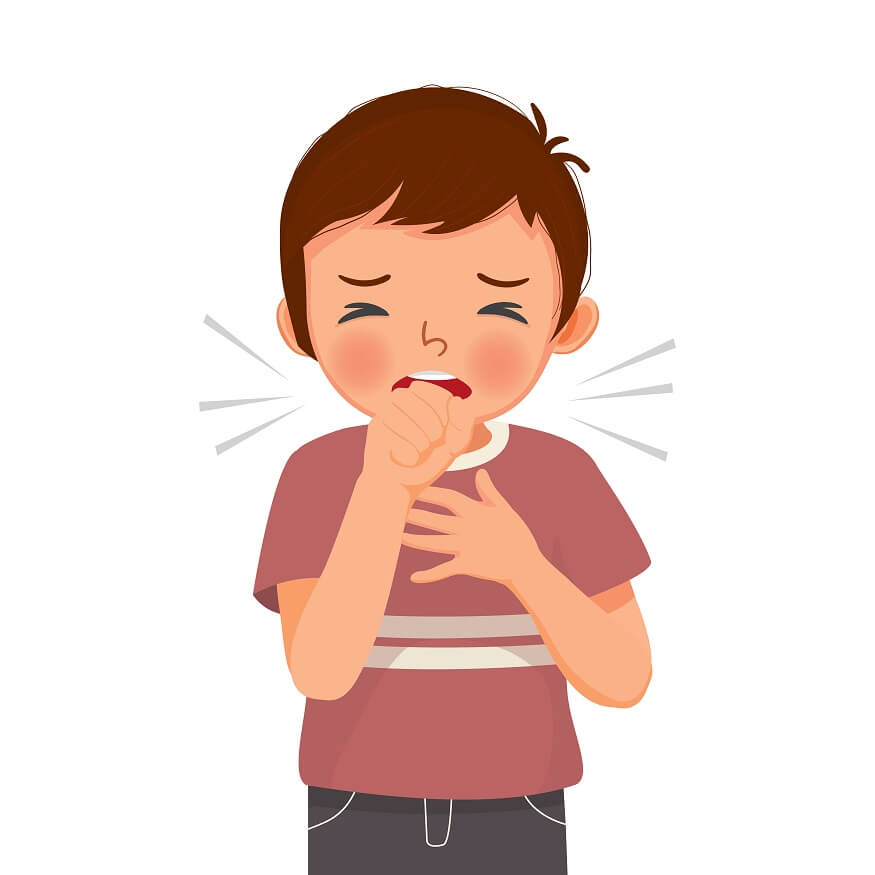Bronchiolitis and bronchitis, despite their similar-sounding names and both being respiratory conditions, are not identical. They affect different parts of the lungs and pose distinct health impacts on different age groups.
Understanding the differences is essential for effective prevention, diagnosis, and treatment. This blog aims to provide a comprehensive comparison of bronchiolitis and bronchitis, offering insights into their symptoms, causes, diagnosis, and treatment options.
Also Read: Indigestion in Children: Causes, Symptoms, and Natural Remedies
What is Bronchiolitis?
Bronchiolitis is a respiratory infection that primarily affects children, especially those under two years of age. It is characterised by inflammation and congestion in the bronchioles, the smallest air passages in the lungs. The main cause of bronchiolitis is the respiratory syncytial virus (RSV), but other viruses such as influenza and adenovirus can also cause this condition.
Symptoms of bronchiolitis can range from mild to severe and may include a runny nose, cough, mild fever, wheezing, and difficulty in breathing. In severe cases, bronchiolitis may cause dehydration, and breathing difficulties, and can sometimes lead to hospitalisation.
What is Bronchitis?
Bronchitis, on the other hand, is an inflammation in the lining of the bronchial tubes, the larger air passages that deliver air from the trachea (windpipe) to the lungs. This condition can affect both adults and children, but it is more prevalent among adults, especially those who smoke or are exposed to second-hand smoke.
Bronchitis can be acute or chronic. Acute bronchitis often results from a viral infection like the common cold or flu and lasts a few weeks. Chronic bronchitis is a more serious condition that persists for at least three months and recurs over two consecutive years. The leading cause of chronic bronchitis is smoking, but exposure to air pollution, dust, and toxic gases can also contribute.
Symptoms of bronchitis include a persistent cough that produces mucus, chest tightness, shortness of breath, and fatigue. Other symptoms may include chest discomfort or tightness, wheezing and low-grade fever. In chronic cases, bronchitis can lead to severe lung diseases such as pneumonia or chronic obstructive pulmonary disease (COPD).
Also Read: How to Identify Bronchitis in Children, and How It’s Treated
Bronchiolitis Vs Bronchitis: Diagnosis and Treatment
The diagnosis of both bronchiolitis and bronchitis typically involves a physical examination and a review of medical history. Providers may offer laboratory tests, chest X-rays, and lung function tests to confirm the diagnosis.
Management of both conditions includes alleviation of symptoms and prevention of complications. Treatment for bronchiolitis primarily involves ensuring the child stays well-hydrated and gets plenty of rest. A humidifier can help make breathing easier.
Bronchitis treatment mainly focuses on relieving symptoms and preventing complications. This can include cough suppressants, bronchodilators to widen the bronchi, and in certain cases, antibiotics, especially if the bronchitis is bacterial in origin. Chronic bronchitis may require more intensive treatment, including bronchodilators and anti-inflammatory medications to manage symptoms and improve lung function.
Despite their differences, both bronchiolitis and bronchitis can pose significant health concerns if not properly managed or prevented. Ensuring vaccination, practising good hand hygiene, and avoiding exposure to tobacco smoke can help protect against these diseases.
Bronchiolitis Vs Bronchitis: Prevention
Preventing respiratory infections such as bronchiolitis can be achieved through vaccination. The respiratory syncytial virus (RSV) vaccine can be particularly beneficial for high-risk infants. Good hygiene practices, such as regular handwashing, can help reduce the spread of viruses that cause these conditions.
Preventing bronchitis, especially the chronic form, involves avoiding exposure to harmful substances like tobacco smoke, air pollution, and industrial chemicals. Smoking cessation is crucial for individuals with chronic bronchitis, as it significantly improves their prognosis and quality of life.
It is important to note that certain groups of people such as infants and young children with underdeveloped immune systems may be at higher risk for developing severe complications from bronchiolitis and bronchitis.
Similarly, elderly individuals and those with pre-existing respiratory conditions, such as asthma or COPD, may face more severe outcomes if they contract bronchitis. Doctors should be vigilant when managing these cases and consider the individual’s age, medical history, and overall health status to provide personalised and effective care.
Raising awareness about the risks and encouraging preventive measures within these high-risk populations can contribute to reducing the overall burden of these respiratory illnesses.
The lessons learned from managing respiratory infections during times, like the COVID-19 pandemic, have emphasised the need for robust public health infrastructure, preparedness, and continued research to enhance respiratory healthcare. It is only by staying informed about medical advancements, that we can strive to improve respiratory health services, leading to better treatment for individuals affected by bronchiolitis, bronchitis, and other respiratory conditions.
Also Read: Quick Tips for Treating Kids with Flu
Conclusion
Though bronchiolitis and bronchitis both involve inflammation of the respiratory passages, their causes, symptoms, affected patient populations and treatment strategies markedly differ. Understanding these differences can help healthcare providers offer timely and appropriate care to patients and aid individuals in seeking prompt treatment.
At EuroSchool, we believe it is important to promote good respiratory health among our students, teachers and parent community. We regularly organise health workshops to empower parents and caretakers to recognize early signs, seek timely medical attention, and adopt preventive measures. We strive to work together with, healthcare providers, policymakers, and the public in tackling these respiratory challenges and improving the well-being of individuals across all age groups.










